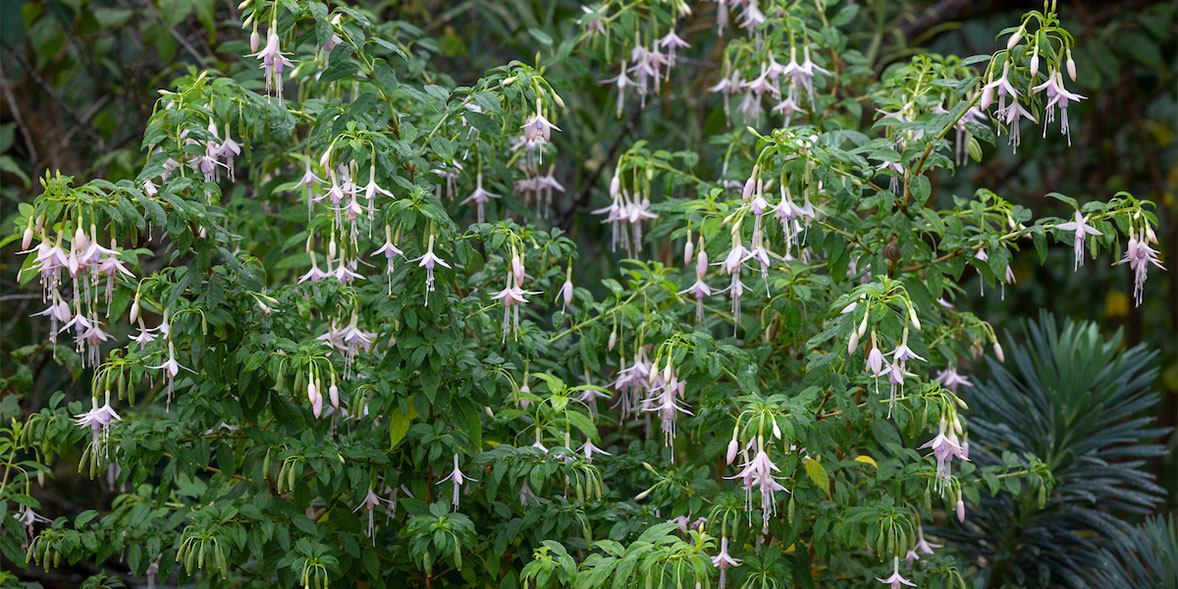
Get a year of super-useful advice
Make your garden better than ever! Get year-round expert tests and advice for only £36.75 - that’s 25% off!
Join Which? GardeningOffer ends 8 January 2026
By clicking a retailer link you consent to third-party cookies that track your onward journey. This enables W? to receive an affiliate commission if you make a purchase, which supports our mission to be the UK's consumer champion.

Every garden has a shady spot, whether it's the whole plot or just a shady corner. Finding plants that will thrive makes life so much easier as they'll naturally want to grow there.
Shade is generally either dry or damp. Dry shade is usually where there are other plants causing shade and also sucking moisture out of the soil with their roots. Damp shade tends to be on the north-side of buildings or walls where there's nothing competing for the moisture.
Our guide will help you choose the right plants for the shade in your garden.

Spring-flowering bulbs, such as tulips, and daffodils are perfect for growing under deciduous trees and shrubs as they grow and flower during the period they've lost their leaves and rain can reach the ground easily. Then they rest while the trees and shrubs are in full leaf. There's even some evidence that tulips in particular are far more likely to live for longer when planted where the soil is dry in summer like this.
Plant the bulbs in autumn and put them in deeply - three times the height of the bulb.
Read our guides on how to grow tulips and daffodils, plus the best varieties

Not all hardy geraniums love shade but varieties of G. phaeum and G. macrorrhizum are perfect for it. They flower in late spring and if you cut the whole plant to the ground afterwards you may get a second flush of flowers later in summer.
They're hardy perennials so once planted, they'll return each year.
Find out more about how to grow hardy geraniums

Make your garden better than ever! Get year-round expert tests and advice for only £36.75 - that’s 25% off!
Join Which? GardeningOffer ends 8 January 2026

Again not all epimediums love dry shade, but some varieties, such as E. x versicolor 'Sulphureum' love it. These beautiful plants have spidery flowers in spring and attractive leaves that form a carpet on the ground. They're hardy perennials so they'll return each year.

Choose the right varieties and ferns will love dry shade. They come in both evergreen and deciduous types so take your pick. Good ones for dry shade include: Polystichum setiferum, Dryopteris filix-mas and Polypodium vulgare. They're perennial so will return each year.
Discover how to grow ferns and best varieties

Easy to raise from seed or you can simply buy plants, foxgloves flower in spring. They're biennials so they die after flowering but they usually sprinkle their seed around which then produces new plants.
Discover which are the best places to buy seeds and plants online

There are hundreds of varieties of these beautiful foliage plants with leaves in all sorts of colours. They also produce flowers on long stems in summer. They grow well in borders and in pots so you can enjoy them on the patio too. They're perennials so return each year.
Watch out for slugs and snails and pick off any you find before they eat the leaves.

This beautiful flowering shrub blooms in summer and comes in a wide range of colours, including white and pink. They're deciduous so they lose their leaves in autumn. Plant some spring-flowering bulbs underneath.

A classic spring-flowering shrub, camellias are covered in pink, red or white flowers. They're evergreens so they look good all year round. They prefer acidic soil so if your garden doesn't have that (you can check with a cheap pH test form the garden centre), grow them in pots using ericaceous compost instead.

These stunning small trees produce fiery autumn leaf colours and many are colourful in spring too when their leaves first unfurl. Damp soil is key to avoiding their leaves getting frazzled and dry. You can also grow them in large pots on the patio - be careful to water them regularly.

Perfect for pots on a shady patio or for planting in borders - choose hardy varieties and they can be left in the ground year after year. There's an amazing range of varieties so take your pick. Don't plant outside until the danger of frost has passed in later spring.
Find out more about how to grow fuchsias and best varieties